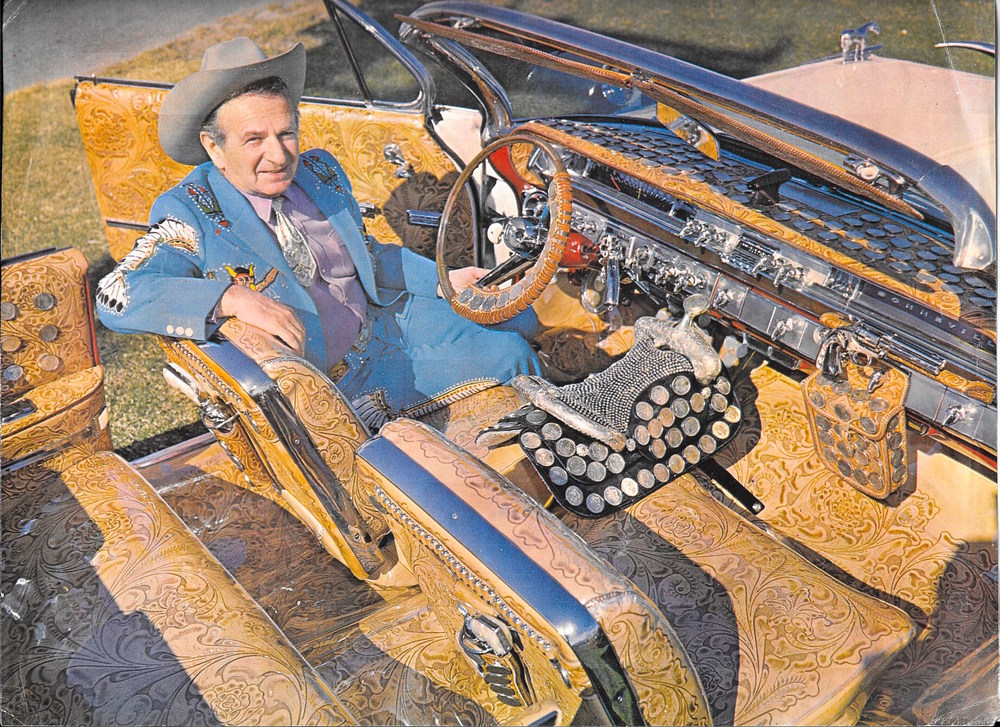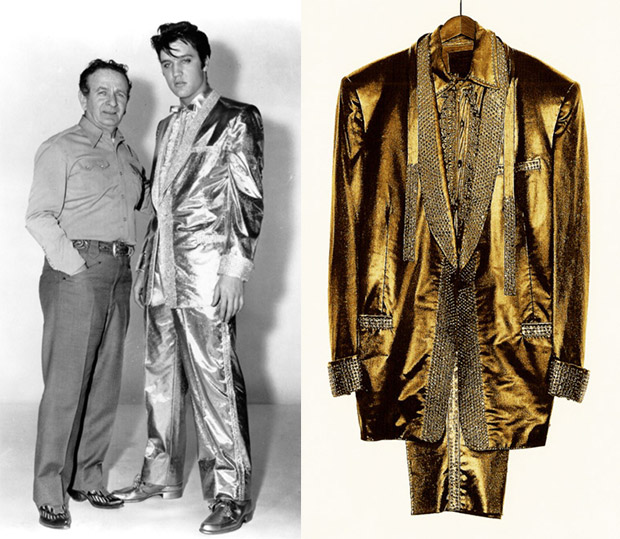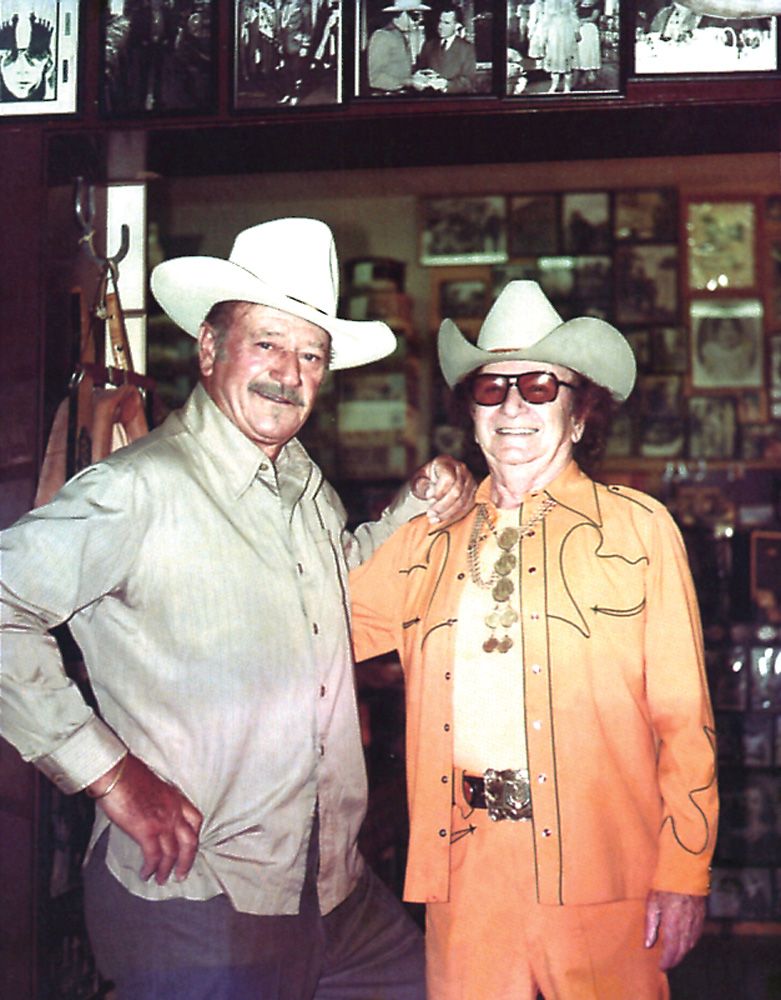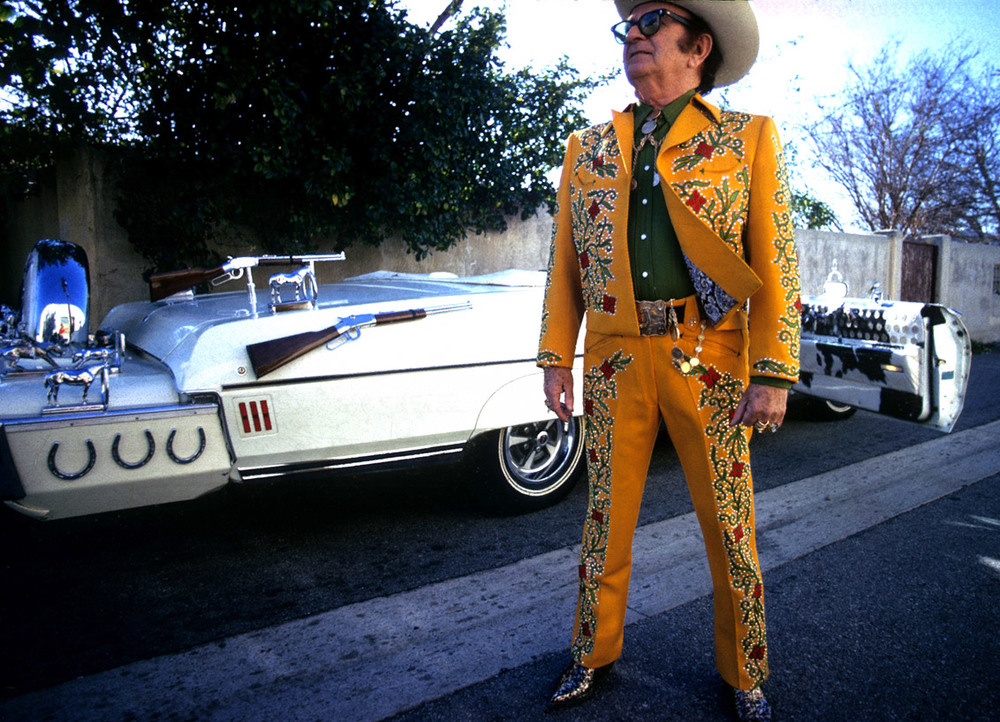Nudie Cohn’s vibrant rodeo fashions and warm friendship made stars like John Wayne shine.
Written by Constance Dunn
Reinvention is as American as John Wayne. So when Nuta Kotlyarenko, born in Kiev in 1902, immigrated to New York at age 11 to escape anti-Jewish pogroms and become “Nudie Cohn,” it was a good thing. The lad would later grow up to electrify American stage fashion and become a style icon in his own right.
“He was definitely ahead of his time,” says Nudie’s granddaughter, Jamie Nudie. “He had a vision. He was the first person to put rhinestones on clothing.” In the early 1940s, before Nudie and his wife Bobbie moved to Southern California—where they would find their greatest success—he was creating eye-catching outfits for showgirls in New York City during the Depression. “He was making G-strings for all the burlesque girls,” says Jamie. “He was putting rhinestones on those outfits and he was very fond of Western flair and clothing—so he decided to incorporate the two. It was a hit.”
Nudie Cohn would trail-blaze American fashion with the invention of the Nudie Suit—essentially, custom Western wear embellished with everything from fringe and rhinestones to feathers and pearl snap buttons. Or fashioned in gold lamé, like the famous tuxedo suit Nudie made for Elvis. The finest of tailoring and embroidery was featured, and Nudie’s garments were eagerly adopted by the cream of country-and-western stardom, from Roy Rogers and Porter Wagoner to Dolly Parton, Duke’s True Grit co-star Glen Campbell and many more. Film stars and music acts of all stripes would follow.
Nudie was, however, more than just a fashion designer. He is remembered as a benevolent figure who treated everyone the same regardless of rank or celebrity, and cultivated dear relationships with his clients, John Wayne included. “My grandfather and John Wayne were great friends,” says Jamie. (She recalls her grandmother Bobbie humorously ribbing her husband, who would accompany Wayne into the dressing room for fittings, saying: “I just want to know what kind of underwear he wears!”)
“It’s better to be looked over than overlooked,” Nudie would declare. It was a saying he put into practice each day. He had a flamboyant, signature dress style and would drive around town in one of his Nudie Mobiles; either a Cadillac or Pontiac convertible that was embellished to the hilt. (At one point he owned 18 of them.) In the evening Nudie might be found cruising Sunset Strip to catch a client’s live musical act, or hanging out at a favorite club—The Roxy and Rainbow Room were among his favorites.
Clients, too, would often stop by his North Hollywood store, a cool scene in itself, to hang out. At one point Nudie’s Rodeo Tailors, which showcased Nudie’s leather-crafting skills along with his fashion design and tailoring prowess, employed 17 craftsmen—everyone from suit makers and boot makers to leather toolers and rhinestone applicators. Nudie passed in 1984, but the store would stay open until 1994, a nearly 50 year run, powered in the end by Bobbie and granddaughter Jamie.
“My grandfather wasn’t just my grandfather, he was my friend,” says Jamie of the man who never failed on Sunday to make her lunch sandwiches for the coming week of school. “I could tell him anything. He would always listen, and he never judged.” Today Jamie works faithfully to keep her grandfather’s personal legacy alive, from running the Nudie’s Rodeo Tailor website to penning his 2004 biography, Nudie the Rodeo Tailor, and generously availing herself to the media. His work, though, is forever embedded in American culture. Singer Post Malone just wore a pink, diamond-encrusted Nudie-style suit to the 2019 Grammy’s, for instance, and a handful of today’s designers are creating garments directly in the style of Nudie Cohn—the man who gave us a new, exuberant mode of dressing that will never fade from American fashion.
“It’s better to be looked over than overlooked.”
Photos courtesy of Jamie Nudie






